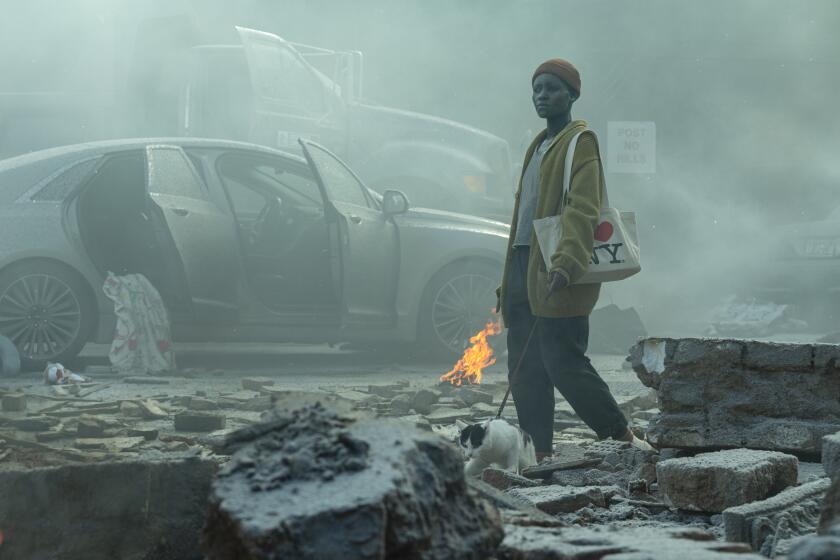Review: ‘The Cotton Club Encore’ elevates 1984 Francis Ford Coppola film from dud to misfire
When Francis Ford Coppola’s expensive — both to make and litigate — gangster/musical “The Cotton Club” was released in 1984, it played like an epic going through the motions, as if an American master of weighty entertainments had gotten lost or tired under the promise of so much Richard Sylbert-designed Depression-era spectacle, cultural resonance and genre punch.
It also didn’t help that a movie ostensibly about a Harlem Renaissance hot spot — one that showcased the cream of black artistry (Duke Ellington, Ethel Waters, Cab Calloway) but for many years admitted only white patrons — itself seemed more interested in those guests than the performers. As hard truths about race and show business history go, that’s a tough irony for a movie called “The Cotton Club” to reconcile. To make matters worse, Richard Gere’s slick, brash cornetist, James Remar’s permasneering racketeer Dutch Schultz and Diane Lane’s seductive moll were hardly the most compelling front-and-center characters, anyway — one sensed the livelier dramatic currents coming from the undercooked backstage/onstage narrative of Gregory Hines’ tap dancer “Sandman” Williams navigating racism, ambition, family concerns and romance with Lonette McKee’s mixed-race chanteuse. While the turf-war gangster story line was like watered-down hooch in a prestige label, the showbiz elements — thin as they were — had an old-fashioned warmth and, in terms of onscreen representation, felt thrillingly new.
Now, with legacy on his mind (i.e., “Apocalypse Now Redux”) and excised footage made available for restoration and inclusion, Coppola has addressed this inequity with a director’s cut labeled “The Cotton Club Encore” that features 24 minutes of unseen material. Coppola says this two-hour-and-18-minute version hews closest to his and co-screenwriter William Kennedy’s original vision of a hoods-and-hoofers saga that balanced Gere’s and Hines’ trajectories as up-and-comers, before nervous backers pressured him to pare black characters’ scenes — even musical numbers! — to fix length issues and, one presumes, secure that long-treasured demographic: audiences uncomfortable with too many blacks onscreen. (The movie fizzled at the box office anyway. Go figure.)
Even color-corrected, this lushly photographed labor of love still feels unwieldy because there’s no getting around the naggingly empty artifice of the crime drama, even with a stellar cast boasting Bob Hoskins as Cotton Club boss Owney Madden and a growing-pained Nicolas Cage as Gere’s mobster-wannabe brother, plus piquant turns along the edges from Fred Gwynne, Lisa Jane Persky, Laurence Fishburne, Gwen Verdon (who gets a few restored dance moves), Tom Waits and Joe Dallesandro.
But it’s also true that what’s been added to deepen the black story lines — an extra line from Woody Strode’s doorman here, a family meal at the Hines apartment there, and more music, music, music — valiantly tugs “The Cotton Club” from gorgeous, off-putting dud toward what-coulda-been misfire about a roiling, race-constricted era’s pains and pleasures. Hines’ floating, effervescent personality is a stronger presence, for one thing, beyond the joyful reality that there’s more of him dancing, both with brother Maurice (their characters’ Cotton Club debut is now seen in its entirety), and in a sprightly, restored solo (“Tall, Tan and Terrific”) when he’s wooing McKee in a church scene.
The women are beneficiaries too. McKee’s barnburner rendition of “Stormy Weather” is now a luminous centerpiece, and there’s now a rousing, funny duet with a showstopping Jackée Harry. Even Coppola’s now more juiced-up Fellini-esque ending, cross-editing between a Cotton Club set of Grand Central Station and choreography at Grand Central itself, works better because the added numbers — like needed injections to an ailing patient — have played their part to more fully paint a picture of a hopping hub where dreams and desire, song and strife mingled with power and violence.
In the end, there’s a point about black struggle alongside white dominance in “The Cotton Club Encore” that Coppola can’t get quite right because, ultimately, atmosphere won out over emotion. But in the movie’s own baked-in pitfalls, reception and reclamation effort there’s still a sweet takeaway: what it means to persevere with strong voices and spirited feet when there’s a camera to witness and footage as evidence.
'The Cotton Club Encore'
Not rated
Running time: 2 hours, 18 minutes
Playing: Starts Oct. 11, Landmark Nuart, West Los Angeles
More to Read
Only good movies
Get the Indie Focus newsletter, Mark Olsen's weekly guide to the world of cinema.
You may occasionally receive promotional content from the Los Angeles Times.






